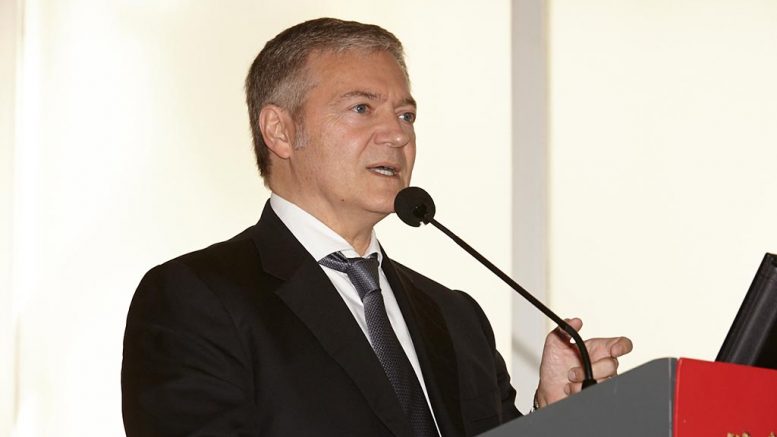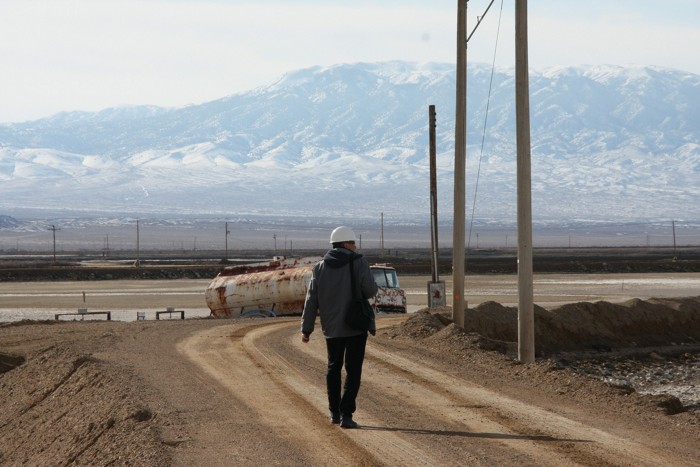Former Yamana Gold head Peter Marrone turns his eye to Africa

Peter Marrone, former Yamana Gold Inc. executive chairman, is back at the helm of a Canadian precious-metals producer after putting $30-million of his own money into Africa-focused Allied Gold Corp.
Allied went public earlier this week on the Toronto Stock Exchange after a reverse takeover and a $267-million private placement financing anchored by Mr. Marrone and four other former members of Yamana’s management team.
The transaction also saw the Yamana team take the key management and board positions, including installing Mr. Marrone as chief executive officer and chairman, Daniel Racine as president and Jason LeBlanc as chief financial officer.
Yamana, which was founded by Mr. Marrone in the early 2000s, was sold earlier this year to Canada’s Agnico Eagle Mines Ltd. and Pan American Silver Corp. for $4.8-billion.
Unlike Yamana’s Americas-based operations, Allied’s operating mines are located in West Africa, traditionally a far-riskier jurisdiction for mining companies that weighs on valuations.
Toronto-based Iamgold Corp., which operates a large gold mine in Burkina Faso, is diversifying its exposure away from the region in part because of the security risk. B2Gold Corp., which has operations in Mali, similarly recently acquired Nunavut-focused Sabina Gold and Silver Corp. in an attempt to mitigate the operational and geopolitical risk.
Before finalizing the transaction with Allied, Mr. Marrone considered other M&A options, including launching an activist campaign at various struggling Canadian gold companies.
He acknowledged that going that route would have entailed a hostile proxy fight with an incumbent board and trying to win over shareholders, an endeavour that can be lengthy and arduous.
Another knock against investing in Canada for Mr. Marrone is the lengthy permitting, Indigenous consultation and construction timelines that can easily stretch 10 to 12 years, whereas a similar project can get off the ground in Africa in about four years, he said.
“It’s really about returns,” Mr. Marrone said. “You can get a better return, the sooner you can get something into production. So geopolitical risk and security are just factors to be put into the mix.”
Allied hopes to more than double its production from 375,000 ounces to 800,000 ounces by 2029 by expanding its flagship Sadiola mine in Mali and bringing the Kurmuk project in Ethiopia in east Africa into production. Allied also has two smaller mines in Ivory Coast and an exploration project in Egypt.
Raising the money for the Allied transaction wasn’t easy given the highly uncertain macroeonomic environment, with worries persisting over the slowdown in China and the direction of interest rates.
“The market has been very, very difficult, he said. “When I took Yamana public in 2003, I was on the road for 6 1/2 weeks marketing a C$55-million financing. That was our first capital raise. This was an order of magnitude tougher, not just because of the size, but because the markets have been so bad.”
With a market valuation of roughly C$1.35-billion, Allied will compete for investor capital with other Africa-focused players such as B2Gold, Centamin PLC and Endeavour Mining Corp.
Britain’s Endeavour has been an active acquirer of Canadian gold companies in the region with the purchase of Semafo Inc. in 2020 and Teranga Gold Corp. the following year. Asked about his thoughts on accepting a takeover offer for Allied Gold, Mr. Marrone said that if the choice was between selling out for a 40-per-cent premium, or going it alone, he prefers the latter.
“My case to shareholders would be to give this management and this team a chance to demonstrate that you’re going to make a lot more money and get a lot better return for your portfolios than a more immediate ticket,” he said.
Mr. Marrone is getting involved with Allied Gold at a drastically different juncture for the gold market compared with when he started Yamana. At that time, the precious metal was in the doldrums. Yamana’s share price skyrocketed in the years that followed as gold went on an epic bull run that lasted the better part of a decade.
Over the past three years, gold prices have been more range-bound, gyrating between $1,700 and $2,100 an ounce, with swings dedicated largely on the outlook for inflation and the U.S. dollar. Gold tends to perform better in a high-inflation environment and is traditionally purchased as an inflation hedge.
{{ commodity.name }}
{{ post.title }}
{{ post.date }}


Comments